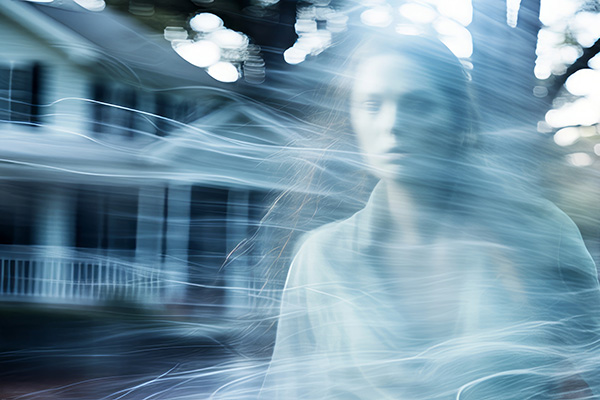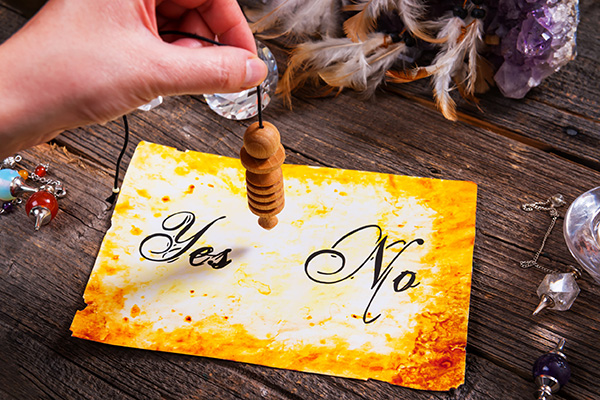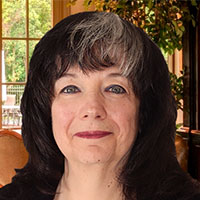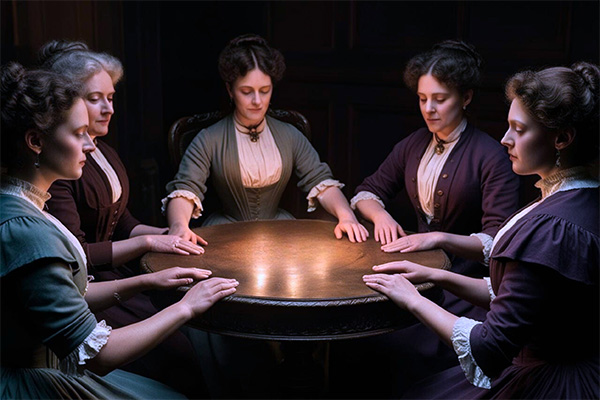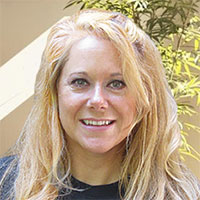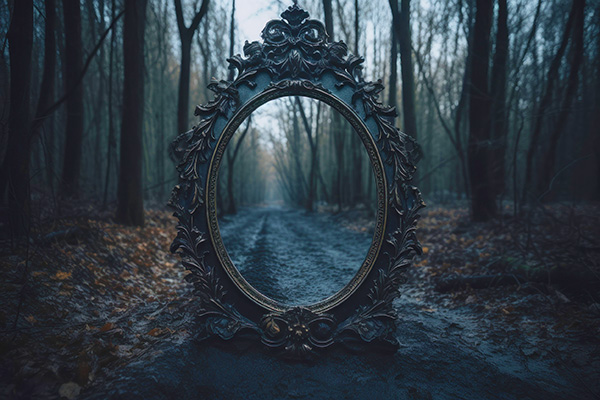Expressing Appreciation from the Spirit Realm: When Thanks is Received from the Other Side
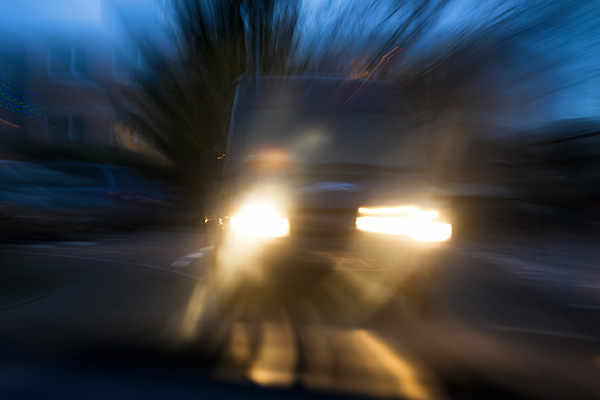 If you appreciate tales of ghosts that validate the existence of life after death and showcase communication with spirits from the other side, you might find the following story about a true paranormal event involving my family and friends intriguing.
If you appreciate tales of ghosts that validate the existence of life after death and showcase communication with spirits from the other side, you might find the following story about a true paranormal event involving my family and friends intriguing.
In his youth, one of my cousins was often seen with a tight-knit group of friends who engaged in light-hearted antics. They were always together.
Eventually, one of his closest friends got married but soon faced unemployment. Regrettably, he fell into debt, his wife left him, and he struggled with a tumultuous relationship with his mother. His financial troubles escalated, he was unable to secure a new job, and there were no indications of reconciliation with his wife.
This unfortunate soul felt a sense of hopelessness, convinced that his situation would never improve, regardless of his efforts. Circumstances remained unchanged, and he sank deeper into despair. In search of an escape, he drove into the woods near his home one frigid November night and took his own life.
I often wish I could have reached out to him before he made that irreversible choice. I would have conveyed to him the importance of life and the futility of considering such actions. I urge anyone grappling with suicidal thoughts to seek professional assistance immediately.
Sadly, my cousin’s beloved friend was already beyond help.
He left a note requesting that his funeral be devoid of his wife and mother. Furthermore, he asked for the van in which he died to be sold to cover the funeral expenses, as he lacked the means to pay for it.
Love is our origin and our final destination. Our spirit was animated by the loving energy of a higher power, and as we release our last breath our spirits will dissipate back into that love ~ Brendon Burchard
<pHis friends chose to respect his wishes, opting not to sell the van. Instead, they came together, and with the kindness of friends, family, and neighbors, they managed to cover the cost of his funeral.
After the funeral service, my cousin and his friends brought the van, where their friend had died, back to the very woods where he had taken his life and set it ablaze. They soaked the van in gasoline and ignited it. In an astonishing turn of events, the horn unexpectedly honked three times! To their utter astonishment, the lights also began flashing.
Was this a result of short circuits from melting wires or some kind of electrical malfunction? Or perhaps a damaged battery triggering the alarm system? Could the extreme heat have warped or melted the horn?
Or was it simply a gesture from their friend, thanking them for what they had done?
My cousin recounted that the horn began beeping moments before the van was ignited. This struck a chord with me. Throughout my years of investigating the paranormal, I have observed that spirits can communicate their gratitude through indirect means, just as my cousin’s friend did in that moment.
I have had a few extraordinary supernatural encounters myself.
Years ago, during my time in community care, I looked after a lovely 90-year-old man. Unfortunately, his wife was in a hospice dying, and it pained me to witness his struggle during such a trying period.
Let us be grateful to the people who make us happy; they are the charming gardeners who make our souls blossom ~ Marcel Proust
One day, not long after her passing, I visited him. As I entered his room, a strong scent of lavender enveloped the space.
“What is that delightful aroma?” I inquired.
“It’s just my wife letting me know she’s still around,” he affirmed.
He explained that his wife adored lavender perfume and would always wear it whenever he gifted her a bottle, as a sign of her appreciation.
For those curious, he didn’t spray lavender perfume throughout the house out of grief. One of my responsibilities was to clean every corner of his home, and I can assure you that in the entire duration of my stay, I did not encounter a single bottle of lavender perfume, essential oil, or air freshener.
After my sister passed away, her husband allocated her entire estate to a neighbor, leaving me with nothing to cherish in memory of her. Aware of this, my mother gifted me a ring that my sister had given her many years back when she was just 16. She told me that I now had something unique to remember my sister by.
Since the ring was too small for my finger, I decided to wear it on a chain around my neck. One evening, just before bed, I removed my necklace, causing the ring to slip off and roll under the bed. My husband assured me not to worry, as he would retrieve it the following day.
Indeed, when I woke up the next morning, the ring was perched on my bedside table. I expressed my gratitude to my husband for finding it. To my surprise, he confessed he had completely forgotten about it. It wasn’t him who placed the ring there, and he had no clue how it arrived.
Could my departed sister have been showing her wish for me to possess her ring by placing it in that spot? As always, dear reader, I leave that to your interpretation.
Love is a symbol of eternity. It wipes out all sense of time, destroying all memory of a beginning and all fear of an end ~ Madame de Staël
Sadly, a large number of individuals view spirit visitations and supernatural occurrences as frightening and malevolent, when in reality, this is often not true. This is primarily influenced by exaggerated representations in mainstream culture. Misunderstandings tend to foster fear and confusion, obscuring the diverse and often positive nature of these events.
In fact, most of these events and encounters with spirits are compassionate, comforting, or deeply significant rather than threatening. Experiences may range from a faint awareness of their presence or a familiar scent to vivid dreams or even sightings of deceased loved ones. These events are often signs of connection, enlightenment, or merely a residual energetic presence.
Once the initial shock or unease fades, embracing these experiences with an open heart can reshape your understanding of them. Rather than fearing the unknown, perceive these encounters as gentle whispers from the beyond. They serve as tender reminders that love, connection, and existence extend far beyond our physical reality.
Such moments can be tremendously healing, providing comfort in sorrow, clarity during uncertainty, and a profound peace in knowing that our emotional ties surpass the veil separating worlds.
|
Lucinda is a well-trained Intuitive and Empath residing in a picturesque village in North Yorkshire, England. She holds the rare ability to empathize with a client’s distress and has navigated many hardships herself, which have only strengthened her resolve! Helping those in need is both her vocation and source of joy. Whenever she requires assistance, her Guides are always present to support her growth and provide insightful guidance for her clients. Predictive abilities have always been a reliable resource for her to foresee events accurately, but Lucinda also utilizes her knowledge in Dream Interpretation, Numerology, Angel Cards, Law of Attraction, and Life Coaching to deliver comprehensive solutions to any challenge. A member of AMORC and Beyond Freedom Evolution, she offers inspiration, education, and personal support for spiritual advancement. Should you seek answers or wish to attract your desires, you can find Lucinda at PsychicAccess.com. |
Showing gratitude is an impactful practice that can dramatically influence our lives. It allows us to recognize the positive aspects in our lives while fostering a sense of connectivity and optimism. While we often think of showing gratitude to individuals in our lives, have you ever contemplated expressing it to the spirit realm?
In various spiritual beliefs and traditions, it’s thought that our departed loved ones continue to watch over and guide us from beyond. Although these spirits might not communicate with us in the same manner we do with the living, it doesn’t imply that they are unaware of our sentiments. Many believe that by expressing gratitude to the spirit world, our loved ones can perceive our appreciation.
By expressing gratitude towards the spirit realm, we not only acknowledge our loved ones’ influence in our lives, but we also open ourselves to receive their guidance and assistance. This act of appreciation generates a positive and loving energy that can enhance our bond with the spirit world.
So, how can we convey gratitude to the spirit world? One straightforward approach is to verbally or internally say “thank you.” You might also pen a letter or journal expressing your gratitude to those departed loved ones. Additionally, lighting a candle or offering a prayer in their memory can serve as a meaningful way to demonstrate your appreciation.
It’s essential to recognize that expressing gratitude towards the spirit world is a personal journey. There’s no right or incorrect method, as long as it stems from a genuine place of love and sincerity. Whether you hold beliefs in the spirit realm or not, taking the time to express gratitude can positively affect your life and those around you.
In conclusion, expressing gratitude to the spirit world can be a profound and significant practice. By appreciating the role our departed loved ones play in our lives, we can fortify our connection with the spirit realm and open ourselves up to their guidance and support. So, the next time you feel thankful for something in your life, don’t hesitate to convey that gratitude to the other side. You never know how your words of appreciation may resonate and be acknowledged from beyond. Continue reading


